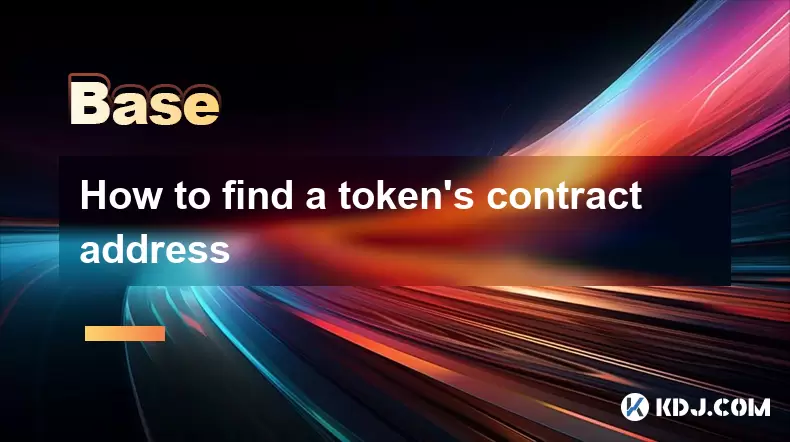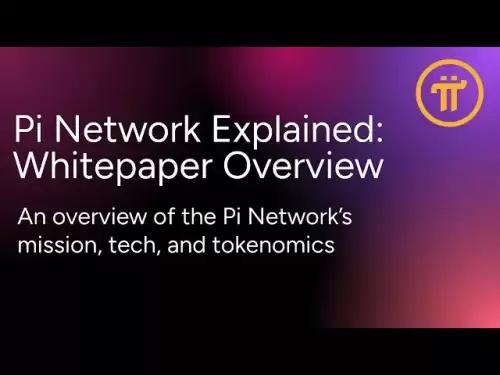-
 Bitcoin
Bitcoin $121,713.8152
3.06% -
 Ethereum
Ethereum $3,041.6437
2.42% -
 XRP
XRP $2.9499
5.12% -
 Tether USDt
Tether USDt $1.0000
-0.02% -
 BNB
BNB $704.1034
1.75% -
 Solana
Solana $166.7523
2.91% -
 USDC
USDC $0.9999
0.00% -
 Dogecoin
Dogecoin $0.2052
2.90% -
 TRON
TRON $0.3011
-0.47% -
 Cardano
Cardano $0.7461
1.42% -
 Hyperliquid
Hyperliquid $48.3650
1.12% -
 Stellar
Stellar $0.4548
3.52% -
 Sui
Sui $3.9527
14.50% -
 Chainlink
Chainlink $16.3300
5.87% -
 Bitcoin Cash
Bitcoin Cash $511.8016
1.25% -
 Hedera
Hedera $0.2395
1.40% -
 Avalanche
Avalanche $21.6526
2.06% -
 UNUS SED LEO
UNUS SED LEO $9.0073
-0.23% -
 Shiba Inu
Shiba Inu $0.0...01369
2.61% -
 Toncoin
Toncoin $3.0335
0.66% -
 Litecoin
Litecoin $96.6206
1.72% -
 Monero
Monero $355.1673
5.35% -
 Polkadot
Polkadot $4.0839
2.47% -
 Uniswap
Uniswap $9.3282
9.72% -
 Dai
Dai $0.9997
-0.01% -
 Ethena USDe
Ethena USDe $1.0004
-0.04% -
 Pepe
Pepe $0.0...01248
1.07% -
 Bitget Token
Bitget Token $4.4642
2.68% -
 Aave
Aave $325.0626
6.81% -
 Bittensor
Bittensor $418.1482
6.22%
How to find a token's contract address
A token's contract address is a unique identifier on the blockchain that governs its rules and ensures secure interactions with dApps, wallets, and exchanges.
Jul 14, 2025 at 07:21 pm

What is a Token's Contract Address?
In the world of cryptocurrencies, especially within blockchain ecosystems like Ethereum, a token's contract address is a unique identifier that represents the smart contract governing the token. This alphanumeric string serves as the location where the token's rules and functionalities are stored on the blockchain. Understanding how to locate this address is crucial for users who want to interact with decentralized applications (dApps), participate in token swaps, or verify token legitimacy.
Why Is It Important to Locate a Token’s Contract Address?
Knowing how to find a token's contract address can be essential for various reasons. For instance, when sending or receiving tokens, ensuring you're using the correct contract address prevents irreversible loss of funds. Additionally, developers and investors may need the contract address to audit the code for security vulnerabilities or review the tokenomics. Incorrect usage of a contract address might lead to permanent loss of digital assets, making it a critical piece of information.
How to Find a Token's Contract Address on Blockchain Explorers
Blockchain explorers such as Etherscan for Ethereum-based tokens or BscScan for Binance Smart Chain tokens are primary tools used to retrieve contract addresses. Here's how to use them:
- Navigate to the official website of the explorer corresponding to the blockchain the token operates on.
- Use the search bar at the top of the page to enter the name or symbol of the token.
- From the search results, select the correct token. This will direct you to a detailed overview page.
- The contract address will be displayed prominently under the token information section.
This method is reliable and widely accepted across the crypto community.
Finding a Token’s Contract Address Through Decentralized Exchanges
Decentralized exchanges (DEXs) like Uniswap or PancakeSwap also provide access to contract addresses. These platforms allow users to view detailed token information before engaging in trades. To find a contract address via a DEX:
- Connect your wallet to the exchange platform.
- Navigate to the token pair you’re interested in trading.
- Click on the token details section, which usually includes the contract address.
- Verify the address by cross-referencing it with the official documentation or whitepaper of the project.
Using DEXs not only helps identify contract addresses but also provides insight into liquidity pools and trading volume.
Locating a Token’s Contract Address via Wallet Applications
Many cryptocurrency wallets, including MetaMask, Trust Wallet, and Coinbase Wallet, offer features to display contract addresses. If you already hold the token in your wallet, retrieving the contract address is straightforward:
- Open your wallet application and navigate to the wallet address holding the token.
- Select the specific token from your asset list.
- Look for an option labeled “Details” or “Contract Address.”
- Tap or click to reveal the full address associated with the token.
This method is particularly useful for verifying token authenticity before sending or receiving funds.
Checking Official Project Documentation and Whitepapers
Reputable projects typically publish their token contract addresses in official documents such as whitepapers, websites, or social media announcements. Developers often include this information to enhance transparency and trust. To utilize this approach:
- Visit the project’s official website or read their whitepaper.
- Search for sections related to tokenomics, smart contracts, or technical specifications.
- The contract address is usually listed alongside other key metrics like total supply and distribution schedule.
Relying on official sources minimizes the risk of falling victim to scams or counterfeit tokens.
Frequently Asked Questions (FAQ)
1. Can I find a token’s contract address through its ticker symbol alone?
While some platforms allow searching by ticker symbol, it’s not always sufficient due to multiple tokens sharing similar symbols. It's safer to use the full token name or verify through additional sources like the official website or whitepaper.
2. Is it safe to share a token’s contract address publicly?
Yes, sharing a contract address is generally safe since it's meant to be public. However, ensure you're not revealing any private keys or sensitive wallet information alongside it.
3. How do I verify if a contract address is legitimate?
You can verify a contract address by cross-referencing it with trusted sources such as the project’s official documentation, verified accounts on social media, or reputable blockchain explorers.
4. What should I do if I send tokens to the wrong contract address?
Unfortunately, transactions on the blockchain are irreversible. If you send tokens to an incorrect contract address, recovery is unlikely. Always double-check the contract address before initiating any transaction.
Disclaimer:info@kdj.com
The information provided is not trading advice. kdj.com does not assume any responsibility for any investments made based on the information provided in this article. Cryptocurrencies are highly volatile and it is highly recommended that you invest with caution after thorough research!
If you believe that the content used on this website infringes your copyright, please contact us immediately (info@kdj.com) and we will delete it promptly.
- Bitcoin's Ascent: From Crypto to Valuable Asset Dominating Global Finance
- 2025-07-14 22:30:11
- Bitcoin, Michael Saylor, and the Relentless Pursuit: A Deep Dive
- 2025-07-14 20:50:12
- BONK's Wild Ride: Grayscale Buzz and Volume Spike - What's Next?
- 2025-07-14 21:10:46
- Week Review, July 7-13, Highlights: Crypto Market Surges to New Heights
- 2025-07-14 21:10:46
- Pi Network's Price Puzzle: Stability Amid Altcoin Recovery – What's Next?
- 2025-07-14 21:17:24
- ADA Eyes $1.90, HBAR & ONDO: Bullish Breakouts on the Horizon?
- 2025-07-14 21:30:11
Related knowledge

What is the Bitcoin dominance index
Jul 12,2025 at 10:35pm
Understanding the Bitcoin Dominance IndexThe Bitcoin Dominance Index, often abbreviated as BTC.D, is a metric used to measure Bitcoin's market capital...

What is the Bitcoin dominance index
Jul 11,2025 at 04:29am
What is the Bitcoin Dominance Index?The Bitcoin Dominance Index is a metric used to gauge Bitcoin's market capitalization relative to the total market...

Can crypto be a hedge against inflation
Jul 14,2025 at 12:21am
Understanding the Concept of Hedging Against InflationInflation refers to the general increase in prices and fall in the purchasing value of money ove...

Can crypto be a hedge against inflation
Jul 12,2025 at 12:07pm
Understanding the Role of Blockchain in Decentralized Finance (DeFi)Blockchain technology serves as the backbone of decentralized finance, offering a ...

What are account abstraction wallets
Jul 13,2025 at 01:43am
Understanding the Concept of Account AbstractionAccount abstraction is a term frequently used in the Ethereum ecosystem, particularly within discussio...

What does "gas limit" vs "gas price" mean
Jul 13,2025 at 04:00am
Understanding the Basics of Gas in Blockchain TransactionsIn the Ethereum and other EVM-compatible blockchains, every transaction requires computation...

What is the Bitcoin dominance index
Jul 12,2025 at 10:35pm
Understanding the Bitcoin Dominance IndexThe Bitcoin Dominance Index, often abbreviated as BTC.D, is a metric used to measure Bitcoin's market capital...

What is the Bitcoin dominance index
Jul 11,2025 at 04:29am
What is the Bitcoin Dominance Index?The Bitcoin Dominance Index is a metric used to gauge Bitcoin's market capitalization relative to the total market...

Can crypto be a hedge against inflation
Jul 14,2025 at 12:21am
Understanding the Concept of Hedging Against InflationInflation refers to the general increase in prices and fall in the purchasing value of money ove...

Can crypto be a hedge against inflation
Jul 12,2025 at 12:07pm
Understanding the Role of Blockchain in Decentralized Finance (DeFi)Blockchain technology serves as the backbone of decentralized finance, offering a ...

What are account abstraction wallets
Jul 13,2025 at 01:43am
Understanding the Concept of Account AbstractionAccount abstraction is a term frequently used in the Ethereum ecosystem, particularly within discussio...

What does "gas limit" vs "gas price" mean
Jul 13,2025 at 04:00am
Understanding the Basics of Gas in Blockchain TransactionsIn the Ethereum and other EVM-compatible blockchains, every transaction requires computation...
See all articles

























































































